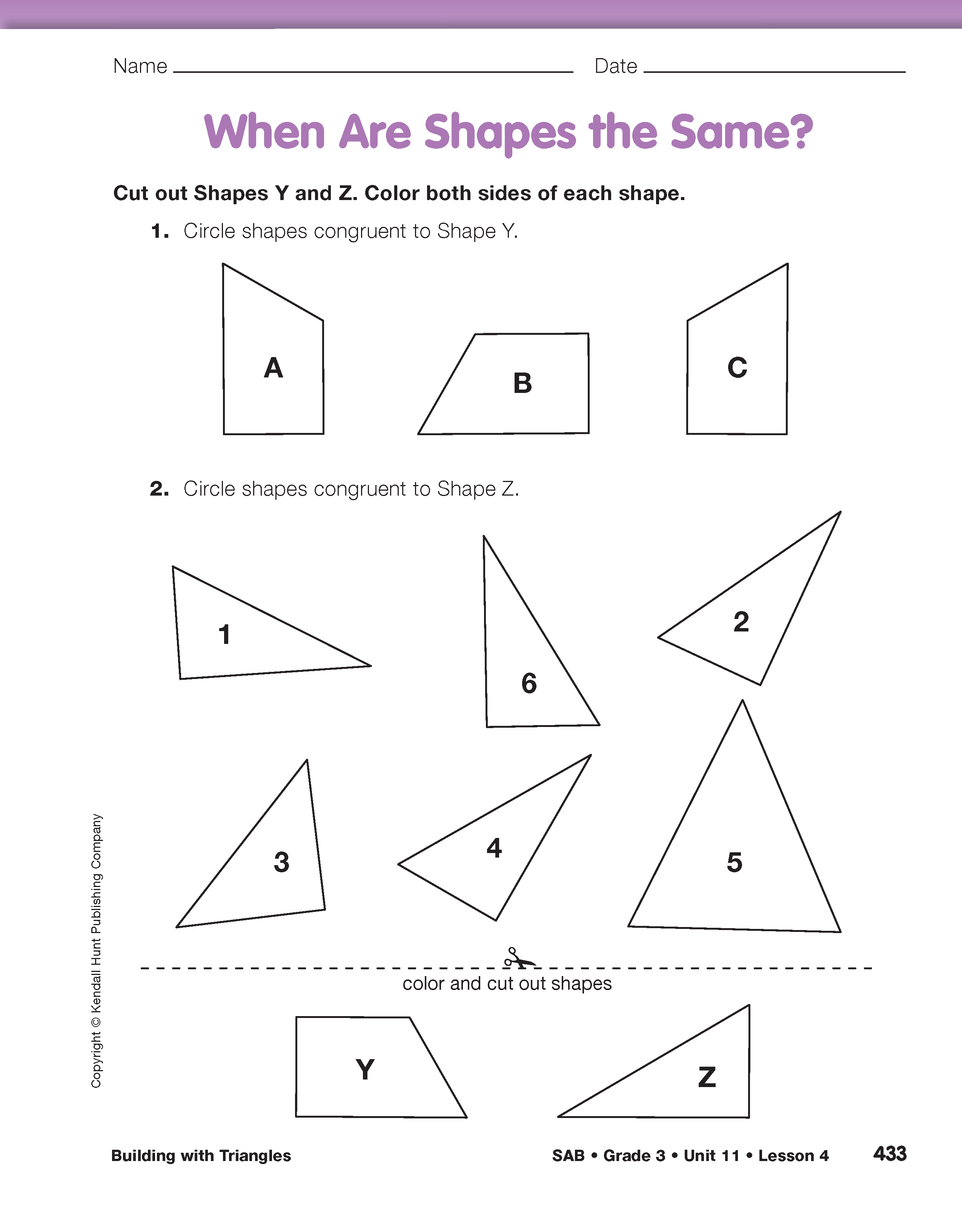Building with Triangles
Est. Class Sessions: 2Developing the Lesson
Part 1. Geometry Concepts
Review Terms. In this lesson, students will build shapes by putting together two or three small triangles. They will record the number of sides, vertices, right angles, and lines of symmetry. They will need to agree on which shapes are the same, or congruent, by moving one (flipping, turning, or sliding) so it exactly covers the other.
Display the large triangle from a set of tangram pieces. Review or introduce vocabulary and concepts students will be working with (triangle, sides, vertices, angles, right angles).
You can informally assess the students' knowledge of certain geometry terms by asking them to describe their triangles. They should be comfortable using these terms to describe their triangle. See Sample Dialog for guiding this discussion.
Review Symmetry. Display the Lines of Symmetry Master to review line symmetry for this lesson. Second-grade students using Math Trailblazers learned to identify shapes with line symmetry, so this will be a review.
Direct students to cut out the shapes on the Lines of Symmetry Master and to fold and draw the lines of symmetry on each shape. After students have completed drawing the lines, discuss where the lines of symmetry were found. Figure 2 shows the lines of symmetry for Shapes A and C. Shape B does not have line symmetry.
Ask:
Introduce Congruency. As students build shapes by putting triangles together, they will need to know which shapes are the same, or congruent. Two shapes are congruent if Shape A can be turned, slid, or flipped onto Shape B so that it exactly covers Shape A. See the Content Note about Testing Congruence. To further explore the concept of congruency, display the When Are Shapes the Same? page you prepared from the Student Activity Book. Refer students to that page in their book. Direct them to cut out Triangle Z and Shape Y at the bottom of the page and to color both sides of each shape.
Ask:
Use the cutout for Triangle Z to continue testing all six triangles. Ask students to explain why they think the triangles are congruent or not congruent to Triangle Z. Triangles 1, 4, and 6 are congruent to Triangle Z.
Ask students to work in pairs to answer Questions 1–5 on the Building with Triangles pages in the Student Guide. These questions formalize the definitions discussed.














